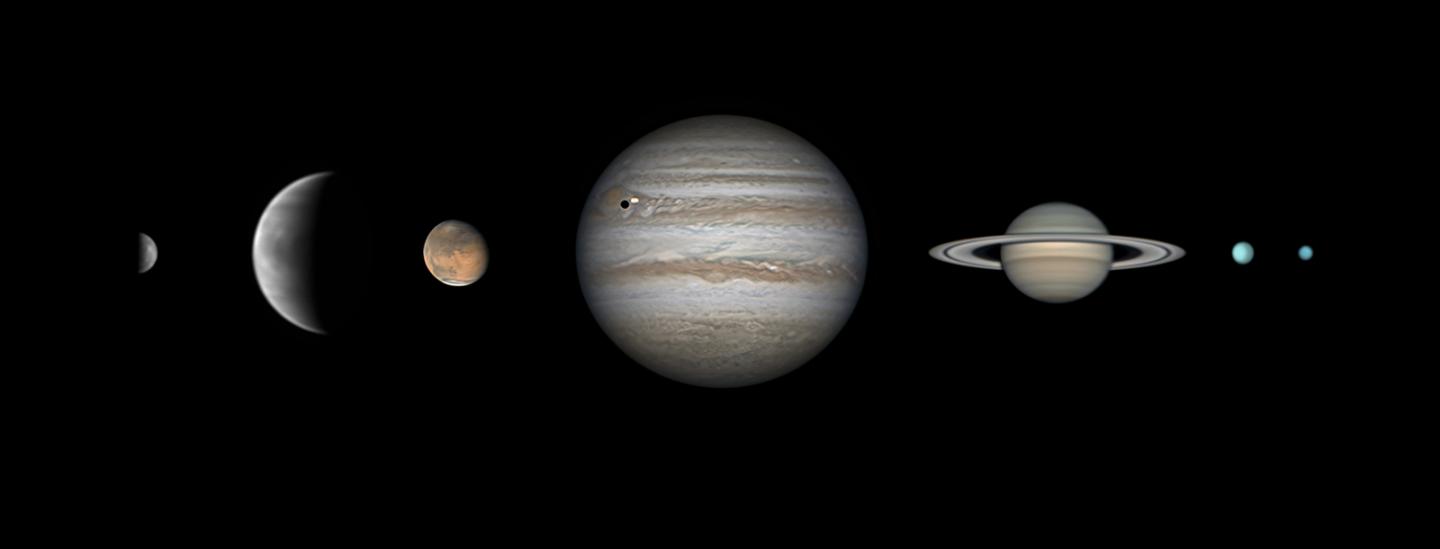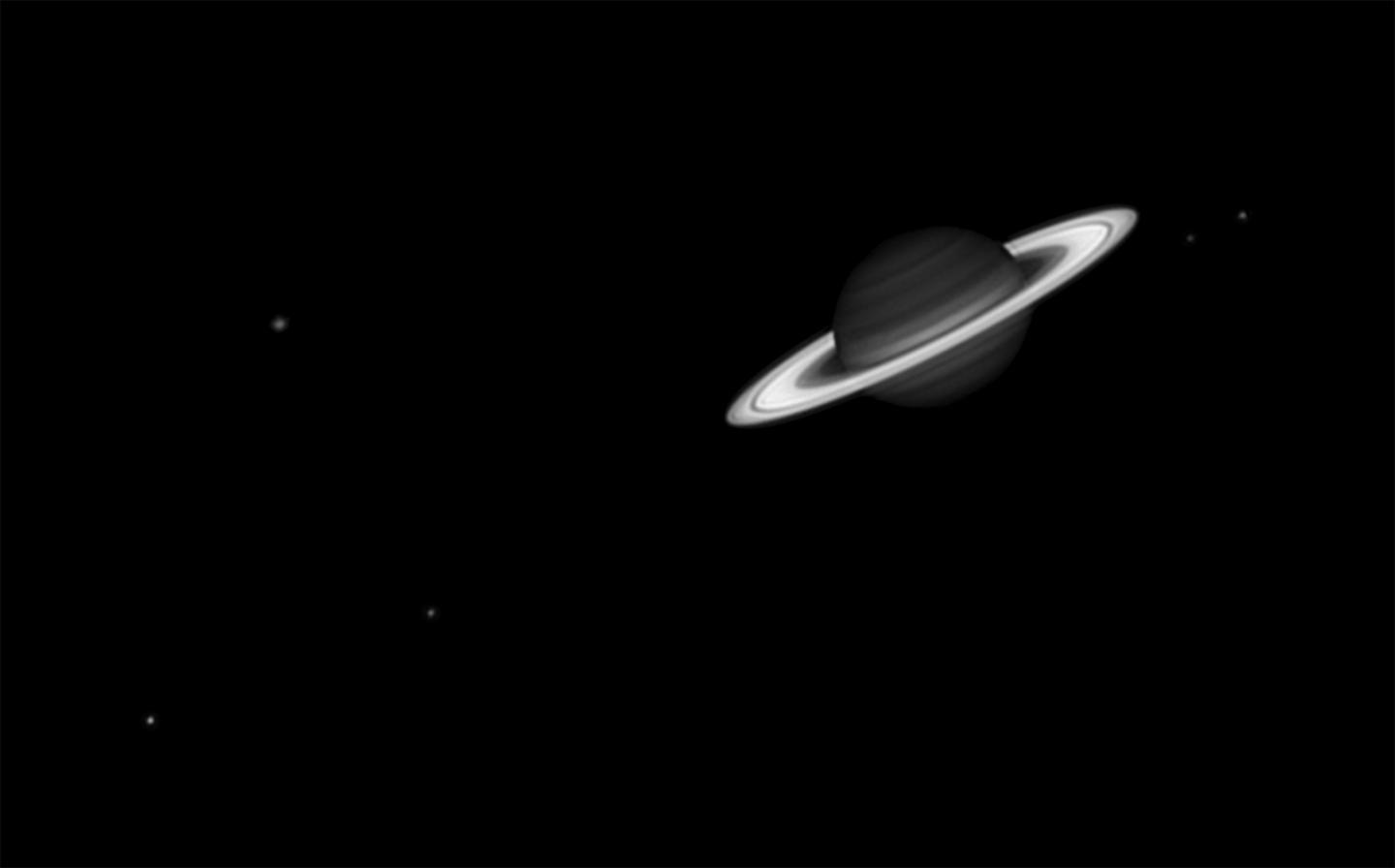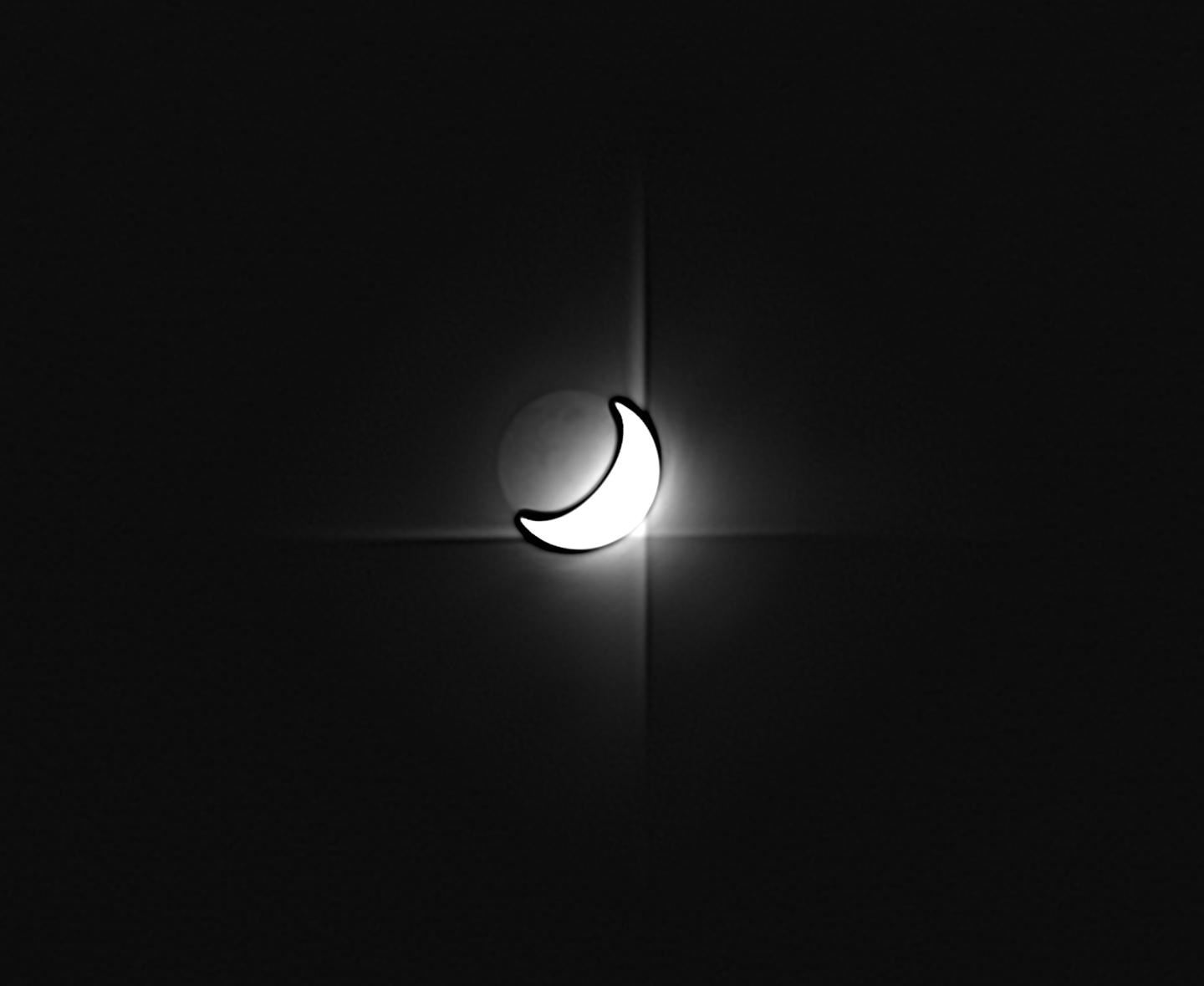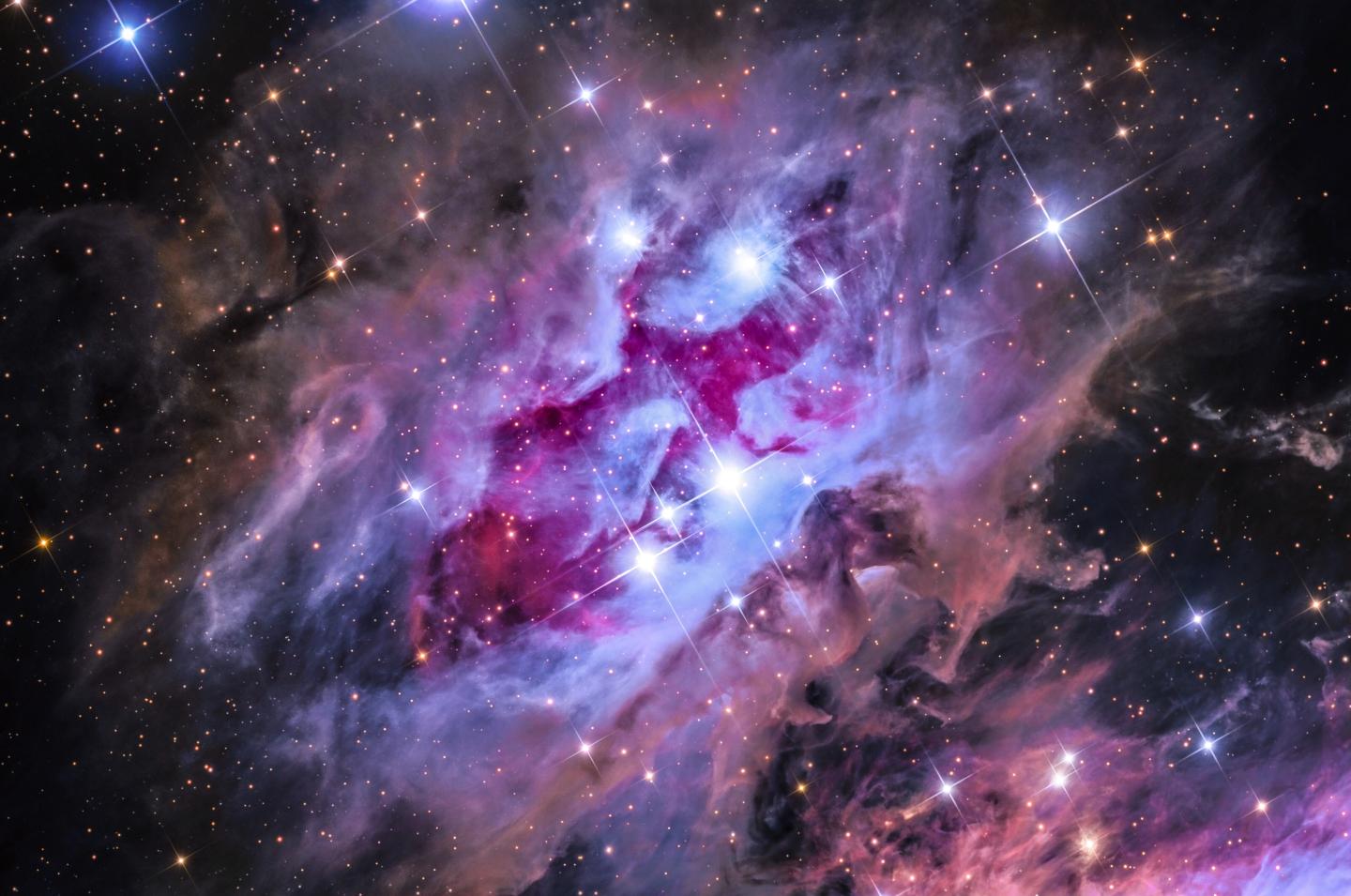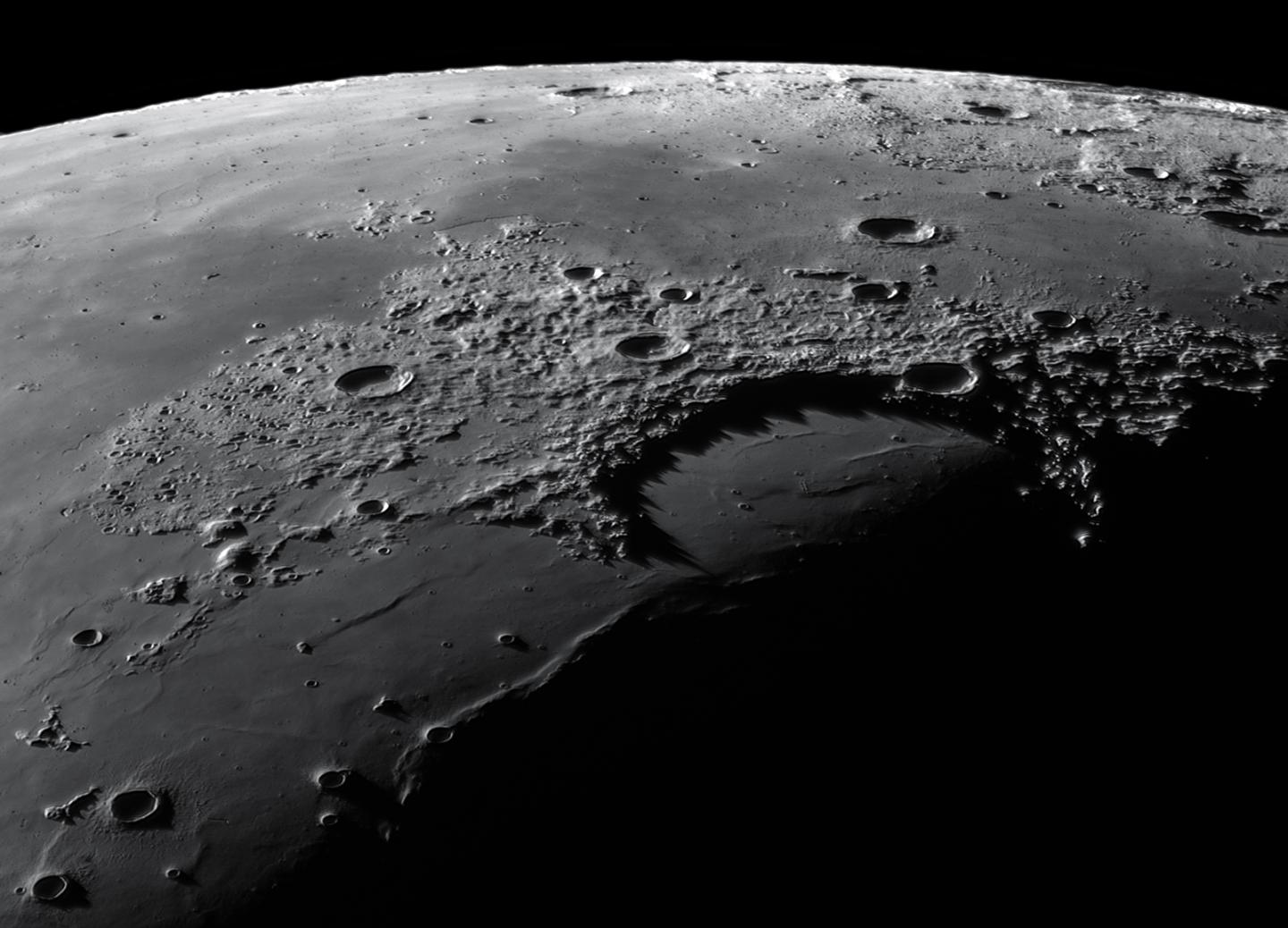
Discover what to see in February's night sky including a planetary parade, shining Saturn and Venus, and a host of deep sky objects in Orion
By Maya, Work Experience Student
Top 3 things to see in the night sky in February 2025:
- 14/15 February– Celebrate Valentine's Day and Galileo's birthday by viewing the Beehive Cluster
- 16 February – Venus at its brightest
- 27 February - Observe nebulae in Orion during the new Moon
Details given are for London and may vary for other parts of the UK.
Look Up! Podcast
Subscribe and listen to the Royal Observatory Greenwich's podcast Look Up! Our astronomers Jess and Imo talk through some of this month’s must-see cosmic objects and discuss two space news stories: a new photomosaic of the Andromeda Galaxy, and the oldest supernova found in the Universe... so far.
A planetary parade
Every night this February it could be possible to see at least 6 planets in the night sky. Throughout most of the month, Jupiter and Venus will be bright in the night sky, with Mars and Saturn visible as fainter dots. Uranus and Neptune will be up and about too, but you'll need a fairly powerful telescope to be able to see them. Towards the end of the month Mercury will start to become visible near the western horizon, making it technically possible to see all 8 planets in one night (we may as well include the one we're standing on for full marks!)
However, we must make a big caveat: by the time Mercury has appeared, Saturn and Neptune will also be close to the horizon near where the Sun has set, making them difficult to see.
When a few planets are visible in the night sky it is often called a planetary parade. You may also hear this event being referred to as a planetary alignment. This is a misleading term, because there isn't much 'aligning' going on. If we viewed the Solar System from 'above', you wouldn't find the planets in a line but clustered on one side of the Sun.
From Earth however, the planets are always in a line – the ecliptic. As the planets orbit the Sun on a relatively flat plane, they appear to move across the sky close to the ecliptic. What's special about the 'planetary parade' is that the planets are appearing above the horizon at night.
Shining Saturn
Famous for having the largest ring system in the Solar System, Saturn is best to spot early in the month when it is farther from the Sun, resulting in more contrast between the planet and the night sky.
February is also the last chance to see Saturn’s rings through powerful binoculars or a telescope for a while, since they will seem to disappear for a short time in March. This will happen because Saturn does not have the same axial tilt as Earth, so the angle we see it from gradually changes. This means the rings can look larger or smaller depending on their angle compared to the Earth. The rings, first observed by Galileo Galilee in 1610, may be hard to spot with only a narrow disk observable, but it’s worth looking out for Saturn just after sunset in the first week of February.
Celebrate with the Beehive Cluster
A great deep sky object to spot to celebrate Valentine’s Day on 14 February is the Beehive Cluster (M44), since St Valentine was also the patron saint of beekeeping. Best seen through a small telescope, this open cluster is another that was first observed through a telescope by famous Italian astronomer Galileo Galilee in 1609.
It’s fitting too that Galileo was born the following day on 15 February - happy 461st birthday Galileo!
The Beehive Cluster contains around 1,000 stars and is relatively bright at an apparent magnitude of 3.7, making it a good target for astrophotographers. Also known as Praesepe, meaning 'manger' in Latin, the Beehive Cluster is also visible without a telescope under dark skies and is one of the closest open clusters to us.
To find it, look towards the middle of the constellation Cancer due South, slightly to the right of the constellation’s central stars Asellus Borealis and Asellus Australis (meaning the northern and southern donkey stars in Latin).
For those willing to stay up late, the Beehive Cluster will reach its highest point in the sky around 11pm on the 14th, and is observable in the early hours of the 15th, if you want to celebrate Galileo’s birthday with one of the first objects he studied through his telescope.
Also look out for M41, the Little Beehive Cluster, just below the dog star Sirius in the South.
Brilliant Venus
Around 6 – 8pm on the 16th, just after sunset, Venus will be visible above the western horizon and will be at its brightest, called its greatest brilliancy. Venus will have an apparent magnitude of -4.6, making it easily the brightest night sky object after the Moon.
As Venus will be so bright through a telescope, you may want to use a filter, or take a look during twilight. This will reveal that Venus is in a waning crescent phase. Much like the Moon, the inferior planets Mercury and Venus show phases (another observation of Galileo’s) because only the part of the planet facing the Sun is illuminated.
Orion's many nebulae
For those wanting to see as many stars and fainter objects as possible, the new Moon on the night of 27 February will mean minimum light pollution in the night sky. One such object is NGC 2281 or the Broken Heart Cluster, which is just about visible without equipment but best viewed with binoculars. This open cluster of stars would be particularly good to see in February because it is very high up near the zenith.
Orion’s Belt is perhaps one of the most well-known asterisms, and just below it in the sky is a bright line of stars representing his sword. Orion’s sword has many other great targets for binoculars and the unaided eye, including star clusters and nebulae, which it would be best to observe during this new Moon. This includes the Orion Nebula, one of the closest emission nebulae to Earth, which is visible without binoculars in a dark sky area.
Other deep space objects to look for in Orion’s sword include the open clusters the Lost Jewel of Orion (or NGC 1980) and the Coal Car Cluster (or NGC 1981).
Nearby is Sh2-279, a group of nebulae which includes the Running Man Reflection Nebula, de Marian’s Nebula (or M43), and the 13th Pearl Nebula (or NGC 1999).
Orion culminates around 7pm in the southern sky on 27 February.
Southern Hemisphere stargazing
In the Southern Hemisphere, the new Moon will allow for the best observations of the Carina Nebula, a bright emission nebula which is near the zenith. The Carina Nebula will culminate at around 1am local time at southern latitudes. At a magnitude of 1, the Carina Nebula is visible without equipment high up in the southern sky in the constellation of Carina, and will look even more impressive through binoculars or a telescope.
For those looking for a challenge, the α Centaurid meteor shower peaks in the Southern Hemisphere on the 8th, with bright meteors appearing at a rate of only 6 per hour.
The Moon's phases in February 2025
First Quarter: 5 February (08:02)
Full Moon: 12 February (13:53)
Last Quarter: 20 February (17:33)
New Moon: 28 February (00:45)
Stargazing tips
- When looking at faint objects such as stars, nebulae, the Milky Way and other galaxies it is important to allow your eyes to adapt to the dark so that you can achieve better night vision.
- Allow 15 minutes for your eyes to become sensitive in the dark and remember not to look at your mobile phone or any other bright device when stargazing.
- If you're using a star app on your phone, switch on the red night vision mode.
You may also be interested in
Header image: The Running Man Nebula © Steven Mohr | Shortlisted in Astronomy Photographer of the Year 2019 Stars & Nebulae category
